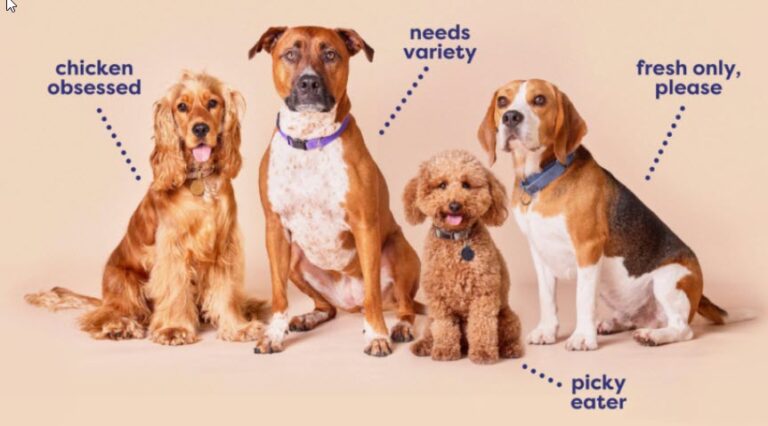Choosing the right dog food can be a daunting task, with countless options available on the market. We all want what’s best for our furry companions, but how do we navigate through the sea of choices to find the perfect match? In this comprehensive guide, we will walk you through a step-by-step process to help you make an informed decision about your dog’s nutrition.
When it comes to your dog’s health and well-being, there is no room for compromise. The food they consume plays a crucial role in their overall vitality and longevity. By taking the time to compare dog food options carefully, you can ensure that you are providing your beloved pet with the best possible nutrition tailored to their specific needs.
The Importance of Choosing the Right Dog Food
Feeding your beloved canine companion is not just a matter of providing sustenance; it is an essential aspect of their overall well-being. Just as our diet affects our health, the food we offer our furry friends plays a pivotal role in their vitality, happiness, and longevity. Therefore, understanding the importance of selecting the right dog food is paramount.
Proper nutrition forms the foundation for every aspect of your dog’s life. It directly influences their energy levels, digestion, coat condition, immune system strength, and even their mental sharpness. The right balance of nutrients ensures optimal growth in puppies and maintains optimal health in adult dogs.
Moreover, choosing high-quality dog food can help prevent a myriad of health issues that may arise from poor nutrition. From obesity to gastrointestinal disorders and skin problems to joint inflammation, a well-balanced diet can act as a shield against various ailments. By investing time in researching and comparing dog food options, you are providing your four-legged friend with the best chance at a vibrant and thriving life.
Why It’s Worth Taking the Time to Compare Dog Food Options
Dogs hold a special place in our hearts, and as responsible pet owners, it is paramount that we prioritize their well-being. One crucial aspect of ensuring our furry companions lead healthy lives is by providing them with proper nutrition. The food we feed our dogs plays a vital role in promoting their overall health, longevity, and vitality. While it may be tempting to simply grab the first bag of dog food off the shelf, taking the time to compare different options is well worth the effort.
When it comes to choosing dog food, there is no one-size-fits-all solution. Each dog has unique nutritional needs based on factors such as breed, age, size, and activity level. By carefully comparing different dog food options available in the market, you can find a product that best suits your pet’s needs. Taking this extra step ensures that your beloved companion receives adequate nourishment and enjoys optimal health.
Moreover, comparing dog food options allows you to make informed decisions about ingredients and quality. Not all dog foods are created equal; some contain fillers or subpar ingredients that offer little nutritional value. By carefully evaluating labels and ingredient lists, you can select a high-quality food product that provides essential nutrients while avoiding harmful additives or allergens. This attention to detail demonstrates your commitment to giving your furry friend the best possible diet.
Step 1: Understanding Your Dog’s Nutritional Needs
Your furry, four-legged companion relies on you to make the best choices when it comes to their nutrition. Understanding your dog’s unique nutritional needs is paramount in providing them with a balanced diet that promotes their overall health and well-being.
Dogs, like humans, require a combination of macronutrients (proteins, carbohydrates, and fats) as well as essential vitamins and minerals. However, the specific requirements can vary depending on factors such as age, breed, size, activity level, and any specific health conditions your dog may have. Consulting with your veterinarian is crucial in determining your dog’s individual nutritional needs.
It is also essential to consider your dog’s life stage when evaluating their nutritional needs. Puppies have higher energy requirements for growth and development compared to adult dogs. Senior dogs may benefit from specialized diets that address age-related issues such as joint health or weight management.
Did you know? A high-quality protein source should be a priority in your dog’s diet since dogs are primarily carnivores. Look for ingredients such as chicken, beef, or fish listed among the first few items on the dog food label.
Evaluating Dog Food Labels: What to Look For
Evaluating dog food labels is crucial when it comes to making informed decisions about what you’re feeding your furry friend. The label provides important information about the nutritional value and quality of the product. Here are some key factors to consider:
1. Ingredient List: The ingredient list is a good place to start your evaluation. Look for high-quality protein sources like real meat (such as chicken, beef, or fish) listed first. Avoid products that use vague terms like “meat by-products” or “animal digest.” Opt for dog foods that have easily recognizable, natural ingredients.
2. Guaranteed Analysis: This section on the label lists the minimum levels of crude protein, fat, fiber, and moisture in the dog food. Ensure that these values align with your dog’s specific dietary requirements. Remember, different life stages and activity levels may necessitate different nutrient ratios.
3. AAFCO Statement: The Association of American Feed Control Officials (AAFCO) sets standards for pet food nutrition and labeling. Look for an AAFCO statement on the label indicating that the food meets or exceeds their guidelines for complete and balanced nutrition.
Ensuring you understand what’s in your dog’s food is critical to their overall health and well-being. By carefully evaluating dog food labels, you can make confident choices that provide optimal nutrition for your beloved companion.
Step 3: Decoding Dog Food Ingredient Lists: Know What’s Inside
When comparing dog food options, it is essential to understand the ingredients used in each product. The ingredient list on the dog food packaging provides valuable insights into what your furry friend will be consuming. However, deciphering these lists can be a daunting task. Fear not! With a little knowledge and attention to detail, you can unravel the mystery and make an informed decision about your dog’s nutrition.
The Importance of Quality Ingredients
The first thing to consider when examining an ingredient list is the quality of ingredients used. Opt for dog foods that include whole meats such as chicken, beef, or fish as the primary ingredient. Avoid products that contain ambiguous terms like “meat by-products” or “animal digest” as these may indicate lower quality protein sources.
Additionally, be wary of artificial additives and fillers like corn, wheat, and soy. These ingredients offer little nutritional value and could potentially lead to allergies or digestive issues for your furry companion. Instead, look for dog foods that boast wholesome fruits and vegetables as supplementary ingredients; they provide essential vitamins and minerals while ensuring a balanced diet.
Understanding Ingredient Order
The order in which ingredients are listed on the label can give you further insight into their quantity within the dog food formula. Ingredients are typically listed in descending order by weight before cooking. This means that if a whole meat source is listed first, it indicates a higher proportion in the food compared to other ingredients further down the list.
However, keep in mind that some ingredients may have high water content before processing but lose significant moisture during cooking. This can lead to a shift in rankings after processing. Therefore, it’s crucial to consider both the order of appearance and understanding how certain cooking processes may affect the ingredient proportions.
By decoding dog food ingredient lists, you can ensure that your furry friend is getting the best possible nutrition. Remember to prioritize quality ingredients and understand their order of importance. With this knowledge in hand, you can confidently select a dog food that will support your pet’s health and well-being.
Step 4: Analyzing Dog Food Reviews: Separating Fact from Hype
When it comes to choosing the best dog food for your furry friend, reviews can be a valuable source of information. However, with the vast array of opinions and conflicting perspectives available online, it is crucial to approach these reviews with a discerning eye. Here’s how you can effectively analyze dog food reviews and separate fact from hype:
1. Consider the Source: Not all dog food reviews are created equal. Look for reputable sources such as veterinary websites, professional dog breeders, or certified animal nutritionists. These individuals have extensive knowledge and experience in assessing canine nutrition and are more likely to provide unbiased and accurate evaluations.
2. Assess Consistency: Pay attention to recurring patterns or consistent feedback across multiple reviews. If several reviewers highlight similar positive or negative aspects of a particular dog food brand, it may indicate some truth behind those claims. Conversely, be cautious of individual testimonials that stand out drastically from the majority opinion.
3. Examine Specifics: Look for detailed information within the reviews that goes beyond general statements or subjective opinions. Seek specific details about ingredients, nutrient content, manufacturing processes, and any notable health improvements in their dogs after switching to a certain brand. This level of specificity lends credibility to the reviewer’s claims.
Analyzing dog food reviews requires critical thinking skills and the ability to separate genuine feedback from mere hype or personal preference. By considering the source of the review, assessing consistency among multiple reviewers, and examining specific details provided in each review, you can make an informed decision when comparing different dog food options.
Step 5: Exploring the Best Dog Food Brands within Your Budget
Now that you have a deeper understanding of your dog’s nutritional needs, evaluated labels and ingredient lists, and sifted through dog food reviews, it’s time to explore the best dog food brands that align with your budget. Remember, providing your beloved furry friend with high-quality nutrition doesn’t have to break the bank. With careful consideration and some smart shopping, you can find a brand that suits both your pup’s needs and your wallet.
When exploring different dog food brands, start by prioritizing those that prioritize transparency. Look for companies that clearly state where their ingredients are sourced from and provide information on their manufacturing processes. This level of transparency demonstrates a commitment to quality and can help you make an informed decision about the products you choose for your furry companion.
Consider reaching out to local pet stores or specialty retailers that offer a wide range of dog food options. Their knowledgeable staff members can guide you towards reputable brands within your budget range. Additionally, online research can be an invaluable tool in finding high-quality dog food at competitive prices. Many manufacturers offer discounts or promotions on their websites or through third-party sellers.
Step 6: Wet vs Dry Dog Food: Which Is the Right Choice?
When it comes to choosing dog food, one of the key choices you’ll face is whether to opt for wet or dry food. Both options have their advantages and considerations, so it’s important to weigh them carefully before making a decision.
The Benefits of Wet Dog Food: Wet dog food, often referred to as canned food, offers several advantages for your furry friend. Firstly, its high moisture content provides hydration and can be beneficial for dogs with urinary or kidney issues. Additionally, wet food tends to be more palatable and appealing to picky eaters. It also has a longer shelf-life once opened compared to dry kibble.
Did you know that feeding your dog wet food can be like treating them with a luxurious gourmet meal? The rich aroma, tender texture, and flavorful sauces can make mealtime an exciting experience for your pet!
The Advantages of Dry Dog Food: On the other hand, dry dog food (kibble) has its own merits that make it a popular choice among pet owners. It offers convenience since it can be left out all day without spoiling or attracting pests. Dry kibble is also generally more affordable than its wet counterpart and comes in larger quantities. Moreover, chewing on the crunchy texture of dry kibble aids in dental health by reducing plaque build-up.
Imagine watching your furry companion enthusiastically crunching away on their kibble while knowing that they are not only enjoying their meal but also improving their oral hygiene!
Making the decision between wet and dry dog food ultimately depends on several factors including your dog’s preferences, specific health needs, budget constraints, and lifestyle considerations. Some owners choose to provide a mix of both to provide variety and balance in their pet’s diet. Consulting with your veterinarian can help you determine the best option that aligns with your dog’s nutritional requirements, ensuring their well-being and happiness.
Step 7: Unraveling the Mystery of Grain-Free Dog Food
Grain-free dog food has gained considerable popularity in recent years, leaving many pet owners wondering if it is truly beneficial for their furry companions. While grain-free dog food can be a suitable choice for some dogs, it’s crucial to understand its pros and cons before making a decision.
The Pros of Grain-Free Dog Food
One of the main reasons why pet owners opt for grain-free dog food is that it can be easier for dogs to digest. Grains like wheat, corn, and soy are common allergens for canines. By eliminating these ingredients from their diet, you may see improvements in skin conditions, digestive issues, and overall energy levels in your furry friend.
Additionally, grain-free dog food often contains higher levels of protein compared to traditional dog food. This increased protein content can help promote lean muscle development and support your dog’s active lifestyle. It also provides a more satisfying meal for your pup, reducing the likelihood of overeating and aiding weight management.
The Cons of Grain-Free Dog Food
Despite its benefits, grain-free dog food is not suitable for every dog. Some experts argue that there isn’t enough evidence to support claims that grains are harmful to dogs in general. Therefore, switching to a grain-free diet might not yield significant health improvements if your canine companion doesn’t have any underlying grain-related allergies or sensitivities.
It’s essential to note that certain grain-free dog foods rely on alternative carbohydrate sources such as potatoes or legumes as replacements for grains. In some cases, these substitutes may lead to an imbalance in nutrients or cause gastrointestinal issues like gas or loose stools in sensitive dogs.
Conclusion: Empowered Decision-Making for Your Furry Friend’s Well-being
In conclusion, by following this step-by-step guide, you are equipped with the knowledge and tools to make an informed decision when comparing dog food options. Remember that your furry friend’s well-being is at stake, and investing time in understanding their nutritional needs can lead to a happier and healthier life for them. As you navigate through the world of dog food labels, ingredient lists, reviews, and brand comparisons, remember that each choice you make contributes to their overall health and vitality. With dedication and a commitment to providing the best nutrition possible for your beloved pet, you can rest assured knowing that you are making a positive impact on their quality of life. So go forth with confidence, armed with this guide, and give your faithful companion the nourishment they deserve.








